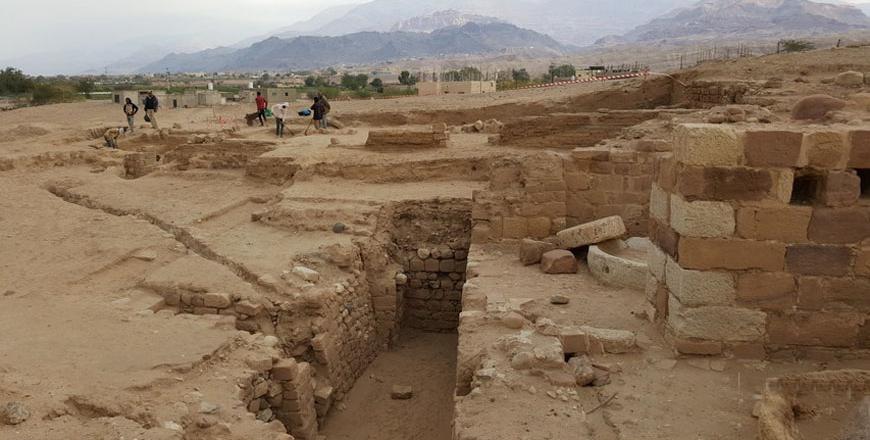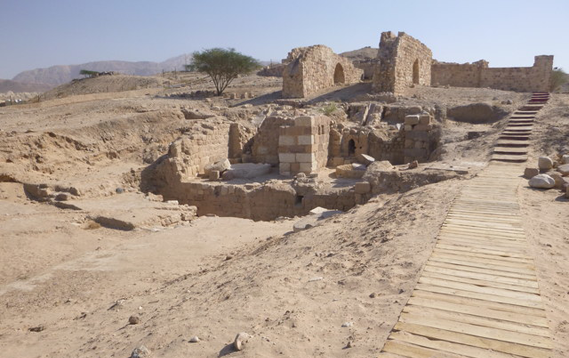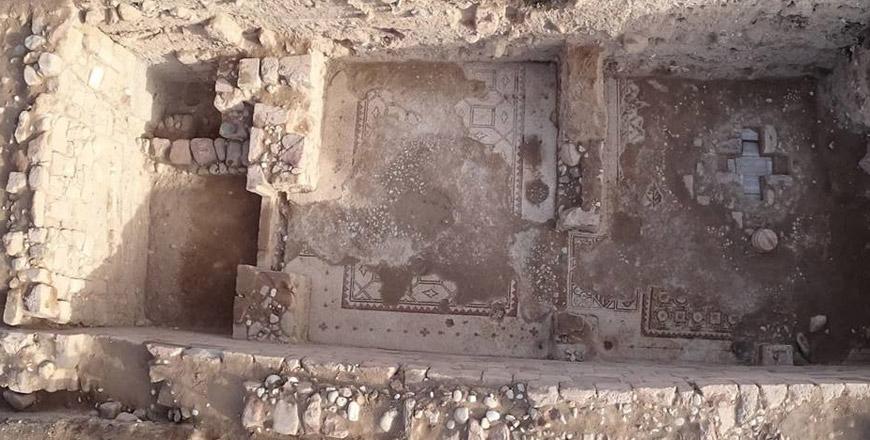You are here
Greek archaeology colloquium discusses Biblical city from story of Lot
By Saeb Rawashdeh - Oct 16,2022 - Last updated at Oct 16,2022

Ghawr as Safi, lower area in front (north) of the sugar presses. Sugar juice conduit on the right of photo, leading to the sugar processing (boiling and curing) area in the background at sugar factory (Photo courtesy of ACOR)
AMMAN — With the support of Ambassador of the Hashemite Kingdom of Jordan to Greece Ahed Sweidat, an International Colloquium on the ancient city of Zoara (also known as Zughar) in the Ghor Safi was inaugurated in Athens on Wednesday.
The colloquium, titled “Interdisciplinary Research and Study of the Discoveries of an Early Byzantine and Mediaeval Islamic Commercial City in Palaestina Tertia — southern Bilad Al Sham”, gathered archaeologists and historians from Greece and abroad.
“Today we have an opportunity to learn so much about the area that, unfortunately, hasn’t seen the level of attention it deserves in the academic discourse and the research so far. The lowest point on the Earth is an area that holds treasures; it’s a crossroad of civilisations,” said Mayor of Athens Kostas Bakoyannis in his opening address.
Sweidat highlighted the shared values of both Greek and Jordanian societies, and the fact that in many historical epochs, Jordan and Greece were part of the same empires.
“The importance of this conference is to prove that Greece and Jordan have a common history. I think it brings us together, and we feel close to each other. Also, three of the most important Christians sites are located in the West and the East Banks,” Sweidat noted.
Yiannis Meimaris from the National Hellenistic Research Foundation spoke about the historical importance of ancient Zoara, most notable for being one of five cities destroyed in the Biblical story of Lot.
“Lot and his daughters are the sole survivors of the catastrophe which befell on Sodom and Gomorrah,” he said.
According to Meimaris, Greek historian Eusebius Pamphilus (260 AD-339 AD) compiled the “Onomasticon”, which was a directory of Biblical pilgrimage sites published in alphabetical order.
“Zoara was one of the Episcopal seats of Palaestina Tertia under the Metropolitan of Petra. The earliest testimony so far of the Bishop Apsis comes from Greek inscriptions dated to 360 AD,” Meimaris said.
Bishops from Zoara were known for conciliar acts, Meimaris continued, adding that they also participated in the Ecumenical Councils.
Lot’s Monastery was excavated in 1987 by Constantinos Politis, a Greek archaeologist, who at that time worked at The British Museum, Meimaris highlighted.
“Geographically, Ghor Safi is a unique place, and it’s known for relatively rich agricultural fields,” noted Politis during his presentation, “Cultural Studies”, in which he described the landscape, environment and identifying features of the site.
Climate change contributed to the boom in settlements around the Dead Sea during the Roman and Byzantine times, while another population boom occurred in 11th and 12th centuries, Politis said.
“Petra and Pella are famous sites, but we made Zoara famous as well,” Politis said, adding that in the Islamic period, Ghor Safi was directly connected with Gaza, and it was a significant commercial hub.
The area was also well known for indigo production and sugar factories that were a state monopoly during Ayyubid-Mamluk period from the 12th to early 15th century, Politis said.
Related Articles
IRBID — Zoara, or modern-day Ghor Safi, was as an important commercial metropolis according to Roman and Byzantine written sources, said a G
AMMAN — Palaestina Tertia, a late Roman-Byzantine province, was well known for its monastic life.
AMMAN — Modern Ghor Safi, located at the southeastern end of the Dead Sea near the lowest point on earth, has been populated for over 12,000


















